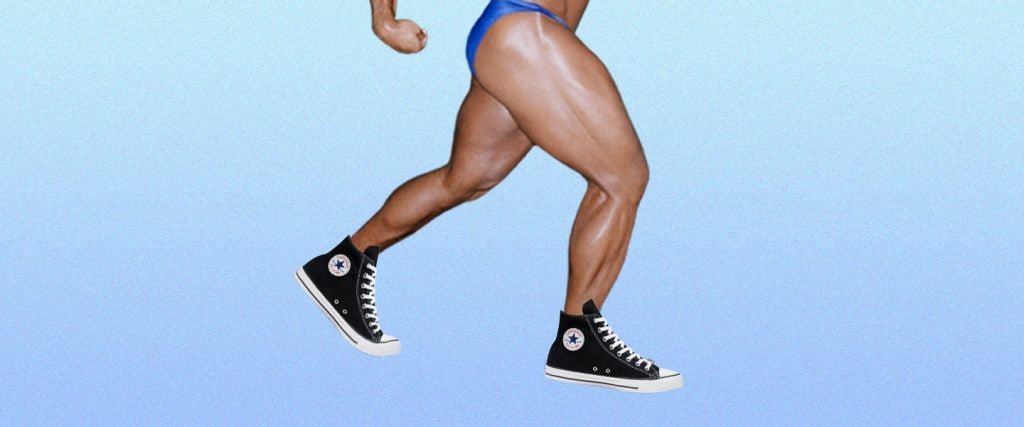Athletically speaking at least, Converse Chuck Taylor All Stars are best known for what they’re capable of on the basketball court. Maybe most famously, they were the shoes that Wilt Chamberlain wore while dropping 100 points on the New York Knicks back in 1962.
In recent years, though, they’ve somehow migrated over to become a favorite of the weightlifting crowd. I have to admit, even to this day, I struggle to embrace Chuck Taylors as providing some sort of performance advantage in the weight room. Instead, when I see them there, I still assume whoever is wearing them has either forgotten their regular workout shoes, or are so confident in their abilities that their choice of footwear is entirely inconsequential.
Will Chuck Taylors help me when I’m weightlifting?
It’s probably best to provide an à la carte menu of answers that you can choose from depending on exactly what you mean by “weightlifting.”
Hypothetically, let’s say you’re only interested in the slow, steady progression toward total body development, and you intend to train for hypertrophy using a wide range of classic bodybuilding movements. In that sense, Chuck Taylors are probably a neutral to negative shoe choice that won’t do much to aid your workout.
Most people emulating bodybuilders with their training styles usually only require a flat, stable base of foot support for the majority of movements. Without question, Chuck Taylors are suitably flat and will enable your feet to feel eminently reinforced during many upper-body training movements. However, if you intend to make the shift over to lunges, calf raises or other lifts that require ankle flexibility or the bending of a shoe’s sole and heel, Chuck Taylors won’t be particularly helpful, and may even be a slight hindrance.
If that’s the case, what kind of weightlifting are Chuck Taylors best suited for?
There are plenty of classic powerlifters who swear by Chuck Taylors and wouldn’t dare attempt a personal record on the squat or a deadlift wearing anything else. The general consensus seems to be that Chuck Taylors have soles that are both slightly lower to the ground than shoes offering similar stability and quite rigid with minimal cushioning. They also offer enough rigidity to the ankles to enable them to feel reinforced when attempting to move vast amounts of weight. In the context of heavy lifts like the squat and deadlift, many consider these traits to be absolutely essential.
That said, Chuck Taylors are not an optimal choice for the snatch and the clean-and-jerk — the two events that define competitive weightlifting. In fact, for them, you’d probably be better off wearing most other forms of athletic footwear. The reason being, the snatch and clean-and-jerk require your feet to explode completely off the ground and then return to it with hundreds of pounds of iron and steel bearing down upon them. It’s for this reason that weightlifting shoes are built with angles, support and cushioning that prioritize the exact sort of explosiveness and propulsion endemic to competitive weightlifting, along with an absence of ankle restraints to allow for total flexibility and freedom of movement.
So would you recommend that I wear Chuck Taylors when I lift?
I think you probably already know the answer: If your goals involve anything other than trying to be the best squatter and deadlifter in your zip code, Chuck Taylors aren’t for you.
Even outside of the classic weightlifting movements that Chuck Taylors are prone to obstruct, they’re likely gonna interfere with your range of motion — and that’s before you take into account all of the other shoes out there for specific cardio workouts (e.g., those for jumping rope and treadmill running). So to call back to their basketball origins, they’re best left to ride the bench whenever you plan to really hit the weights.

